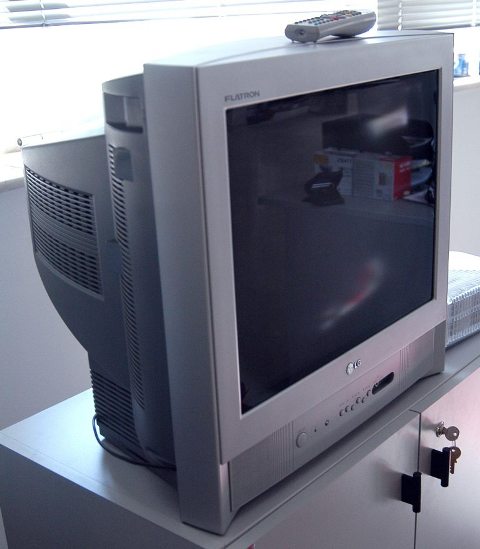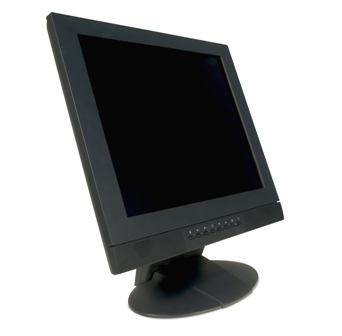You may have heard that all televisions in the United States must be able to accept digital signals by February 2009. If you haven’t heard about his switchover or wonder what it’s all about, check out yesterday’s blog, “Digital television broadcast takes over in 2009.” You don’t have to run out and buy a new TV right away, but if you’re already looking for a new TV, the many different types of TVs may seem confusing. I’m not talking about TV brands (e.g., Sony, Zenith, Toshiba), but the fact that TVs come in many different shapes and sizes, and most importantly, differing technologies. Long gone are the days of only worrying about the size of the screen when shopping for a TV. Today, I’m going to give a brief overview of TV technologies currently on the market to help you prepare for the all digital television future
The average life of a CRT television, or your traditional tube TV, is estimated to be 8 to 10 years. Thus, if you plan to purchase within the next few years, it’s a good idea to think about buying a digital ready TV, so you won’t have to upgrade once the digital broadcast switchover occurs in about three years.

First, let’s make sure we are all using the same language when we’re talking about TV displays. While most people use the terms flat screen and flat panel interchangeably, they are actually different. A flat screen is just your traditional tube TV, but instead of the display being rounded like a bubble, the display is flat (see the picture above). The advantage of a flat screen is that you are able to see the whole picture instead of missing the edges. Try reading one of those news tickers that scroll across the bottom of the TV screen on a traditional tube and compare it to a flat screen tube. You’ll notice a difference. A flat panel, on the other hand, is not a traditional tube display, but a thin flat screen (see the picture below). Compared to the large, boxy traditional tube TVs, flat panel displays are real space savers. Most flat panel displays can be mounted on a wall or used on a table top with a stand. You’ve probably heard of plasma or LCD displays. Both of those are types of flat panel displays. It may not really make a difference if you say flat panel or flat screen, but it’ll help to have the right terminology in mind when you begin asking for help from salespeople.

Today’s TVs have lots of different options to choose from. Among the many options, you can decide on the size, shape, types and number of digital and component inputs, and, if you want, built-in DVD or VHS players. While some of the options represent personal preferences only (e.g., size, shape, built-in players, and maybe types and number of inputs), some options are important if you want the best TV for your money. Since the digital switchover is on the horizon, it is important to understand some of the types of digital TVs on the market. It’s equally important to understand the different display types because buying an inappropriate display type for your use and home may frustrate you as you struggle to watch your favorite shows or movies on an inadequate television.
Now that you’re thinking about some of the differences among televisions, check out the next two blogs covering TV display types and digital TV types.

